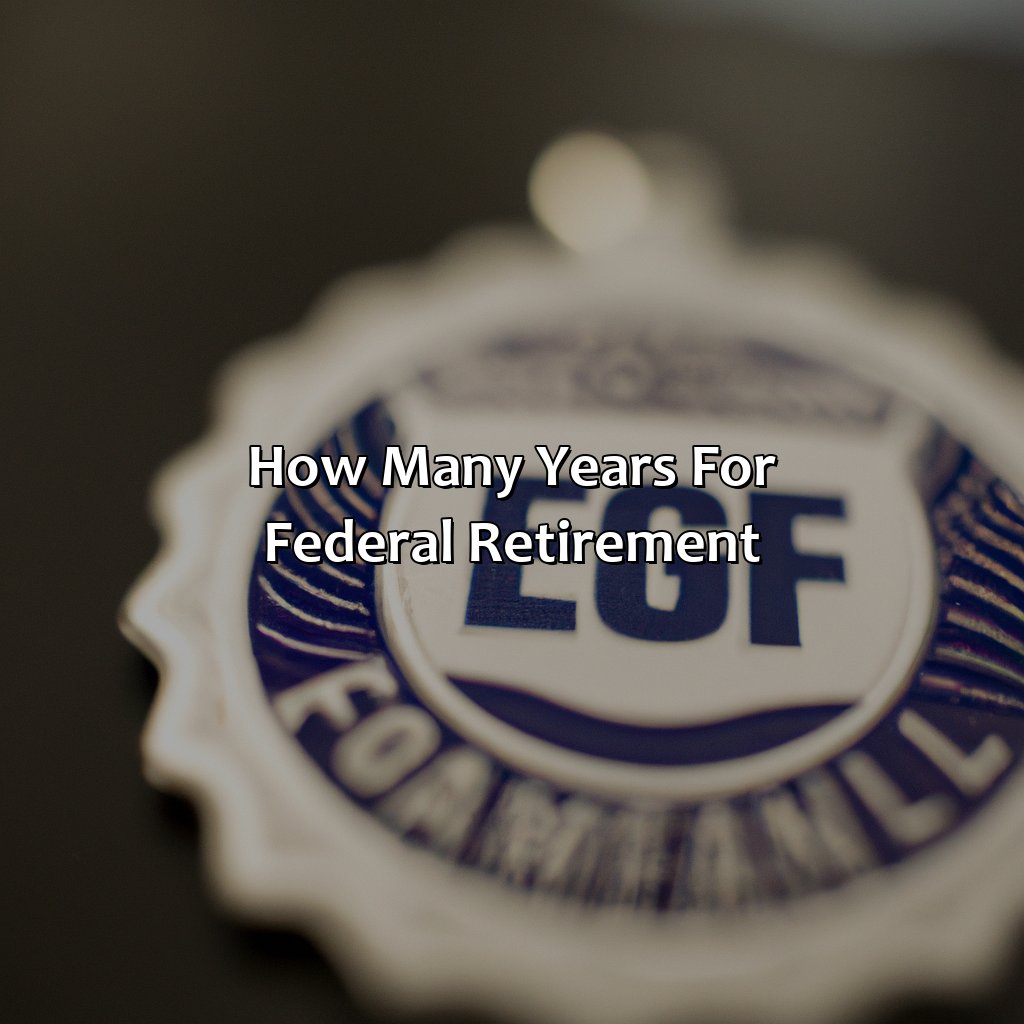How Many Years For Federal Retirement?
Key Takeaway:
- Age and years of service requirements must be met for federal retirement eligibility, with immediate retirement option available for certain employees.
- Federal retirement benefits are calculated based on high-3 average salary and service credit, with various retirement plans and strategies available to maximize benefits.
- Other factors that can affect federal retirement benefits include Social Security and Medicare, Thrift Savings Plan, and early or disability retirement, making it crucial to plan and prepare for retirement.
Are you a federal employee planning for retirement? Knowing how many years of service you need to qualify for federal retirement benefits is essential. You can start preparing for retirement and set yourself up for success with this guide to federal retirement eligibility.
Federal Retirement Eligibility
Want to retire federally? You gotta meet some requirements first! It all depends on your age and service years. But, don’t worry – there’s also options for immediate retirement in certain cases. Read on to find out how age and service years can affect your eligibility, and what immediate retirement options you have.
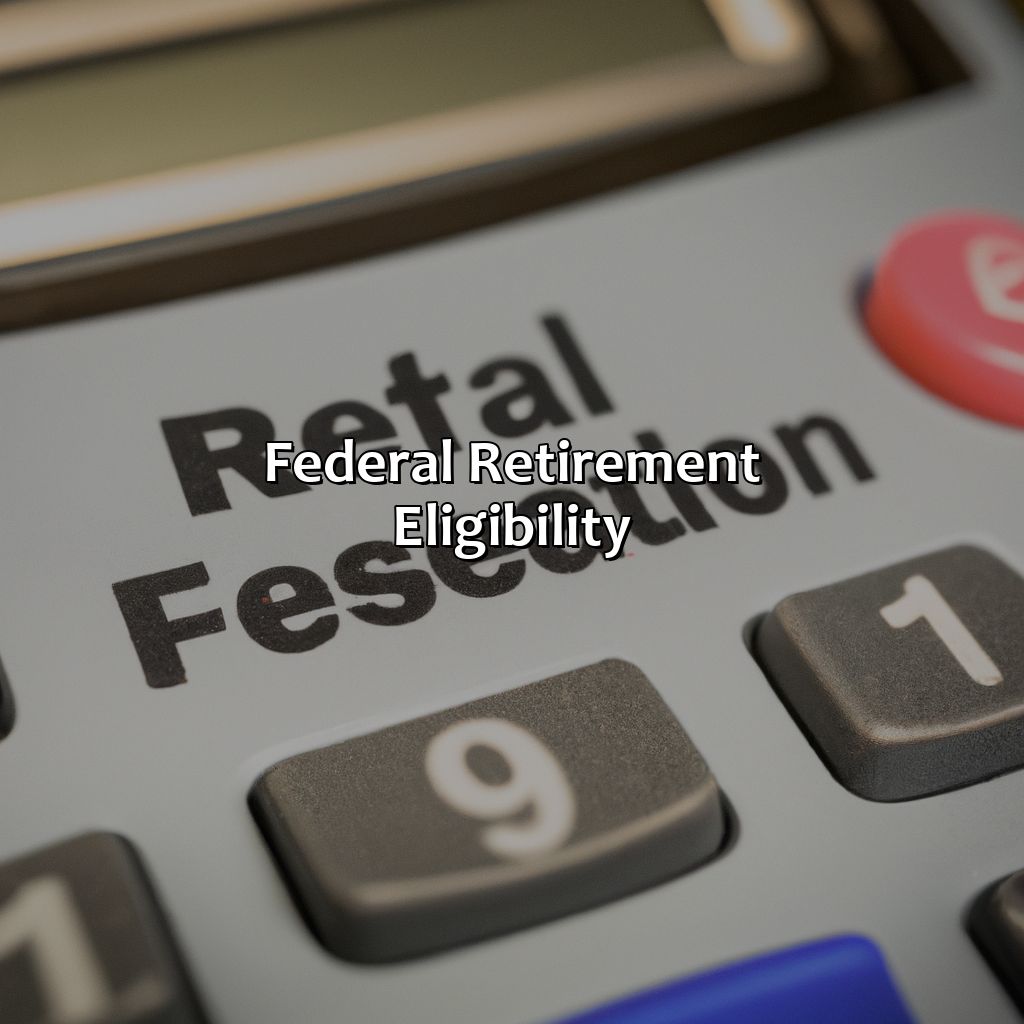
Image credits: retiregenz.com by David Duncun
Age and Years of Service Requirements
In order to qualify for retirement benefits under federal service, one must satisfy the Age and Years of Service Requirements. The provisions set out by the Office of Personnel Management define different methods for calculating eligibility based on the type of retirement plan and specific circumstances.
Age and Years of Service Requirements can vary extensively depending on an individual’s unique situation including their age at retirement, years of civilian service, type of retirement plan, and military history. Here is a table summarizing some requirements:
| Type of Retirement Plan | Age | Years of Civilian Service |
|---|---|---|
| Immediate Retirement | 55 with 30 years or more | age 60 with minimum 20 years age 62 with minimum five years |
| MRA +10 Retirement | Minimum Retirement Age (MRA) with ten years or more but less than 30 years service | MRA+10 with minimum ten years service. |
| Vested Retirement Benefit after Leaving Federal Service Before Eligibility | N/A- Vested benefit pays only in future if you meet certain conditions. | Ten continuous years OR fully vested; regardless of age upon leaving federal service. |
It is important to note that various types of service may count towards meeting these requirements including previous periods as a federal employee or any active-duty military time served. Understanding your unique eligibility criteria can help you better prepare for your potential retirement options.
Interestingly, The National Institute on Retirement Security reports that over half of working-age households in America are at risk of being unable to maintain their standard of living in retirement.
Want to retire ASAP? The immediate retirement option is your golden ticket out of the federal workforce, just don’t forget to pack your golf clubs.
Immediate Retirement Option
When it comes to early retirement, federal employees have the option of taking immediate retirement. This choice benefits those who meet age and service requirements, allowing them to retire without penalty. Generally, federal employees must be at least 55 years old and have between 20-30 years of service to take this route.
This option includes receiving a FERS or CSRS annuity supplement until Social Security kicks in at the age of 62, but keep in mind that the amount is not always fixed, as it depends on multiple variables, including income earned and age.
Interestingly, most civilian federal employees are eligible for retirement after accumulating 30 years of servicesAdditionally. According to OPM statistics as of September 2020 Federal Retirement programs paid out nearly $87 billion during FY 2019.
Retiring with a federal job is like solving a mathematical equation, but one mistake and the only solution is to keep working.
Calculation of Federal Retirement Benefits
You need accurate info to calculate your Federal Retirement Benefits. To understand how to get your benefits based on your length of service, use the ‘High-3 Average Salary Calculation’ and the ‘Service Credit Calculation.’ These are sub-sections in the ‘Calculation of Federal Retirement Benefits’ article.
It’s called ‘How Many Years for Federal Retirement?’ Check it out!
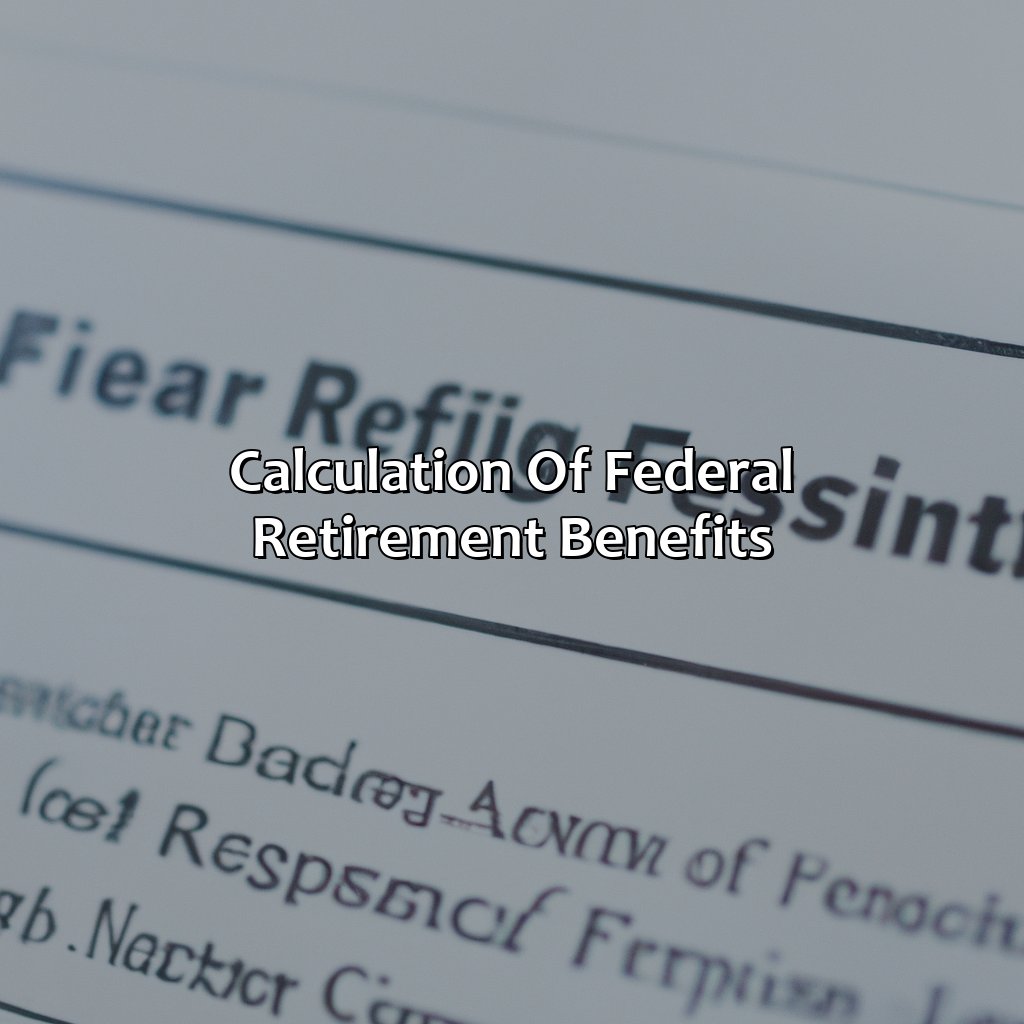
Image credits: retiregenz.com by Yuval Jones
High-3 Average Salary Calculation
For the calculation of retirement benefits for federal employees, the High-3 average salary is significant. High-3 refers to an employee’s highest average salary over three consecutive years of service. This calculation determines how much a federal employee can receive in retirement benefits.
Below is a table outlining how an employee’s High-3 average salary is calculated:
| Year | Salary |
|---|---|
| 2018 | $80,000 |
| 2019 | $85,000 |
| 2020 | $90,000 |
To calculate the High-3 average salary, add up the three highest salaries and divide by three. In this example, the total sum of salaries would be $255,000 ($80,000 + $85,000 + $90,000), and dividing by three gives us a High-3 average salary of $85,000.
It’s essential to note that not all income counts towards a federal employee’s retirement benefit calculation. Factors such as overtime pay may be excluded from this calculation. Therefore it is vital to know which elements are taken into account while calculating benefits.
Paying close attention to one’s income and working overtime can help increase one’s guaranteed payment amount during retirement. Additionally reaching out to HR or specialized financial advisers could suggest additional strategies for maximizing retirement funds in line with unique investment guidance.
Calculating service credit is like solving a math problem, but instead of getting an A+ you get a retirement plan.
Service Credit Calculation
The calculation of one’s service credit is an essential element in determining their federal retirement benefits. It involves analyzing the number of years served by the individual during their time of employment and computing how much their retirement benefit will be.
To make this process clearer, here is a breakdown of the service credit calculation:
| Description | Length |
|---|---|
| Creditable Service | Total Years Served (including military time & sick leave) |
| High-3 Average Salary | Taking the Average Salary of Last Three Years` Work |
| Annuity Formula | Percentages of High-3 Average Salary Multiplied by Creditable Service |
It is crucial to note that retirement benefits vary according to factors such as age and length of service. Therefore it is vital to account for all these variables while calculating service credit.
As part of the ongoing drive for reforms, federal workers are set to receive pay increases soon. According to a report from Federal News Network, there will be a four-month delay before the wage raise happens in light of administrative challenges related to transitioning administrations.
Get ready for some retirement plan options that’ll make you feel like a federal baller in the pension game.
Types of Federal Retirement Plans
If you’re curious about the various federal retirement plans available to you, take a look at “Types of Federal Retirement Plans”! It has a comprehensive overview of two sub-sections: Civil Service Retirement System (CSRS) and Federal Employees Retirement System (FERS). Dive in and learn more!
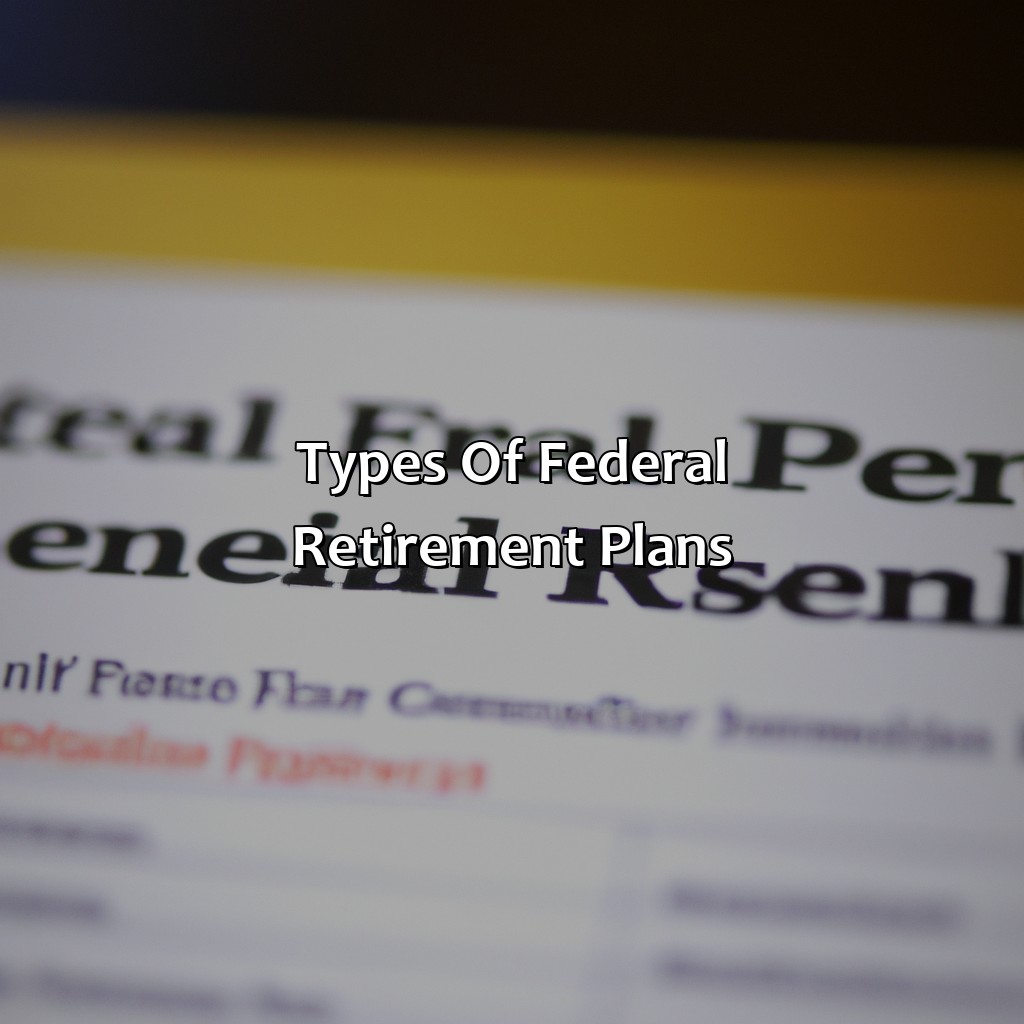
Image credits: retiregenz.com by David Woodhock
Civil Service Retirement System (CSRS)
The Federal Retirement Plan, designed to ensure the financial security of government employees, involves multiple retirement programs.
Among these is a pension plan known as CSRS, a lucrative benefit package for government employees hired before 1987. This plan provides significant tax deferrals and stability during their golden years.
Members under CSRS are eligible for various retirement benefits such as annuities and survivor benefits. The eligibility for full benefits in CSRS requires five years of federal service; likewise, regular voluntary enrolment into Additional Voluntary Contribution (AVC) allows members to save more for retirement with reduced taxes.
Interestingly, did you know that CSRS was implemented in 1920 to replace prior disability plans put in place during the Civil War?
The term ‘CSRS‘ only came into existence when Congress modified it in 1983 to make way for the newer Federal Employees Retirement System (FERS).
Retire with FERS, it’s like regular retirement but with more acronyms.
Federal Employees Retirement System (FERS)
The retirement system for federal employees, known as FERS, is a comprehensive program that includes several tiers of benefits. The pension component is based on an employee’s length of service and highest average salary. In addition, FERS offers Social Security benefits and a voluntary savings plan with matching contributions. These benefits contribute towards ensuring financial stability post-retirement.
FERS covers employees who entered the government service after 1983 and have completed at least five years of creditable civilian service. Employees hired before 1984 fall under the Civil Service Retirement System (CSRS). However, those who switched to FERS from CSRS may be eligible for partial or full transfer of their retirement accounts.
One can maximize retirement benefits by contributing to the Thrift Savings Plan (TSP), which serves as a self-funded investment account aided by employer contributions. Employees are advised to carefully consider their options and choose the right investments and assets according to their individual risk tolerance levels.
Employees intending to retire early must make sure they meet eligibility criteria for immediate retirement benefits, which involve age limits and minimum years of federal civilian service. FERS also provides disability insurance coverage for certain employees unable to work due to disabilities.
In summary, federal employees under FERS should be familiar with the various tiers of benefits offered in order to ensure maximum financial security post-retirement. A combination of pensions based on length of service and salary, social security benefits, TSP savings plan with matching contributions, and disability insurance coverage should be explored and taken advantage of as much possible.
Retire like a boss: Maximize your federal benefits and watch your coworkers turn green with envy.
Strategies for Maximizing Federal Retirement Benefits
Maximizing your federal retirement benefits is the focus of this article! It talks about utilizing the Deferred Retirement Option Program (DROP). Plus, buying back Military Service Credits and receiving the Retirement Annuity Supplement! Strategies for Maximizing Federal Retirement Benefits are discussed.
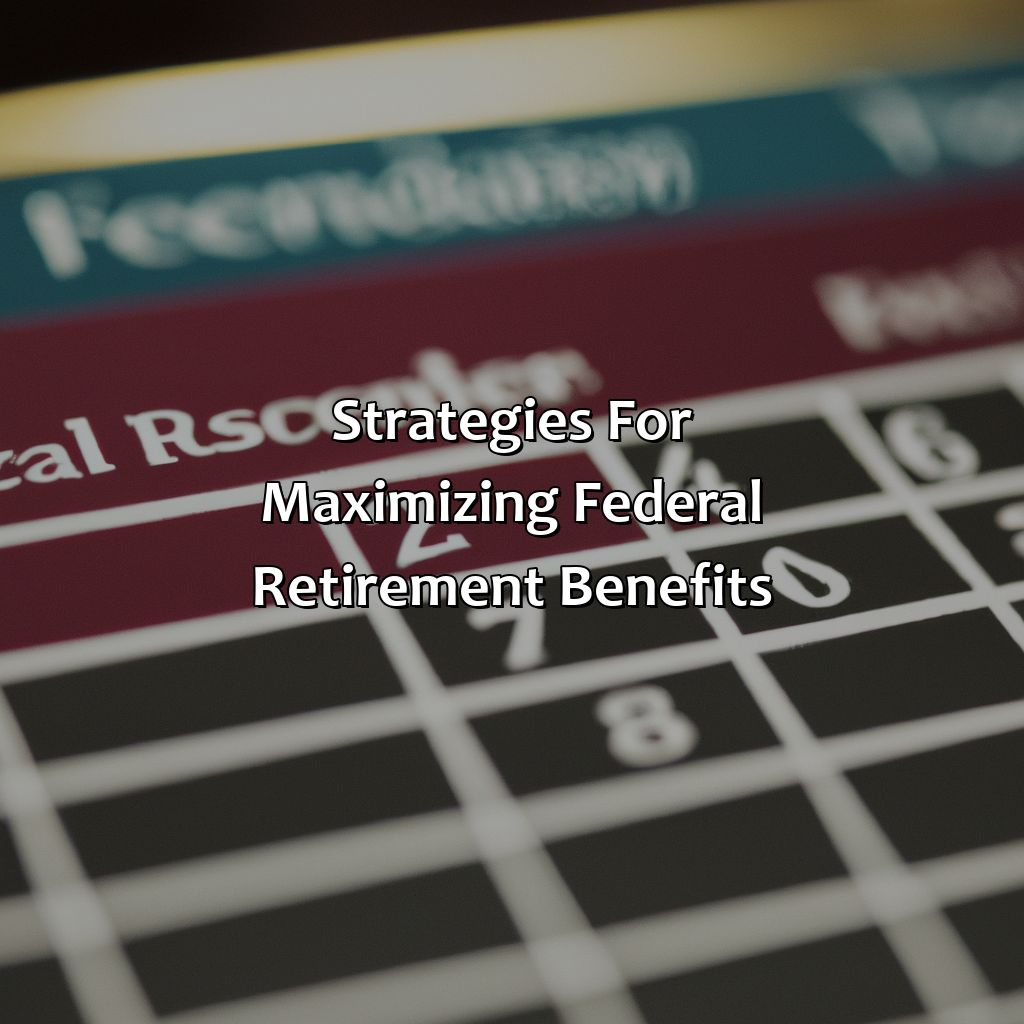
Image credits: retiregenz.com by Yuval Duncun
Deferred Retirement Option Program (DROP)
The Deferred Retirement Option Program allows federal employees to work beyond retirement age while simultaneously accruing retirement benefits. This program is also known as the “DROP” Plan.
Under this plan, employees can delay the retirement of their existing benefits and continue to receive a full paycheck. Meanwhile, they will be regularly contributing towards their future pension plan. This mechanism offers an excellent opportunity for federal employees to maximize their retirement benefits.
One critical aspect of the DROP program that should be taken into account is the mandatory withdrawal restrictions. Employees who participate in this plan must withdraw from service within a specific period. Therefore, it’s crucial to understand how much time is left before committing to this program fully.
According to The Balance, one of the leading personal finance websites around the globe, many factors come into play when navigating military retirement rules and regulations-the government agencies control them.
If only we could buy back all the time we spent waiting in line during basic training.
Buyback of Military Service Credits
For retired military personnel, purchasing back their years of active duty and reserve service could boost their federal retirement benefits. This buyback is referred to as the Redeeming of Military Service Benefits. The cost to redeem varies based on a few factors like how much they were paid in retirement and when they served.
If you want to upgrade your Federal Retirement even when you have limited opportunities, then redeeming your military service may be an excellent option for you. The prorated amount will increase your high 3 salary, and it will adjust many pension calculations. Determining if this is the right option can be challenging, so it’s recommended that you contact OPM or other authorized sources for guidance.
It is crucial to note that the buyback program isn’t always optional; there are times when this program becomes mandatory. In such cases, people who do not participate in the program must accept reduced annuity calculations upon retiring. Always read and comprehend Fine print details from Employment Plan Booklet to understand requirements, exceptions before making any significant decision related to retirement funds.
Pro Tip: Do not overlook any detail while choosing options for Federal Retirement benefits as every penny counts towards making your retirement life contentedly comfortable.
Retirement annuity supplement: because who wouldn’t want free money to go with their retirement?
Retirement Annuity Supplement
The supplement to the retirement annuity is a payment designed to bridge the gap between retirement and when an individual can begin receiving Social Security benefits. This additional payment ensures that retirees have sufficient income during their transition from their federal employment to full retirement. The amount of the supplement is calculated based on their years of service and age at retirement. It is important for federal employees to maximize their years of service to receive the maximum supplement.
To be eligible for the supplement, federal employees need to retire at their minimum retirement age (MRA), which varies based on birth year. Employees who retire early or later will not be eligible for this payment. Additionally, any earned income received after retiring can reduce or eliminate the supplement altogether.
It is interesting to note that, according to The Motley Fool, 19% of retired federal employees receive this valuable supplement, which shows its importance in financial planning for government workers.
Retirement benefits are like a game of Tetris, with factors like salary, service years, and age all fitting together to form your final payout.
Factors that Affect Federal Retirement Benefits
To understand what affects your federal retirement benefits, take a look at:
- Social Security and Medicare Benefits
- the Thrift Savings Plan (TSP)
- Early Retirement and Disability Retirement
These parts provide great answers to help you get the most out of your retirement income.
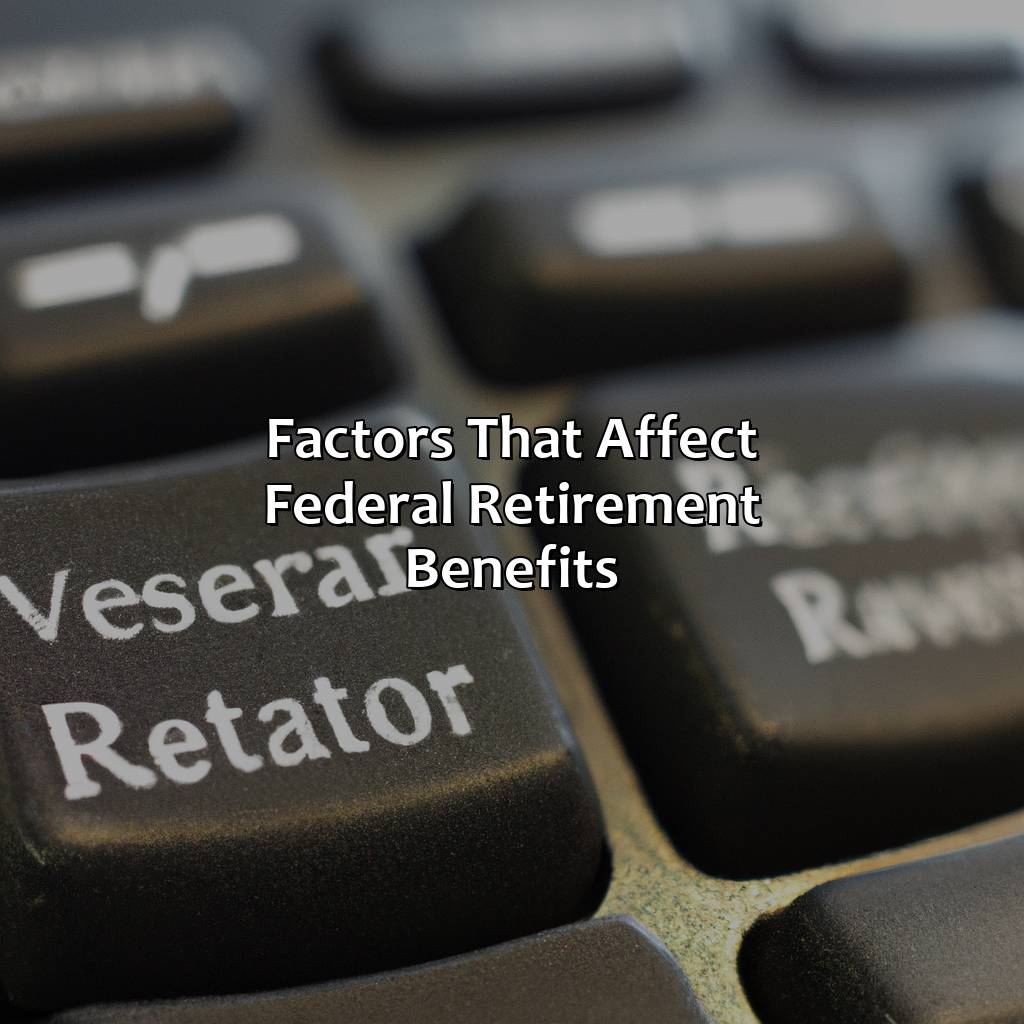
Image credits: retiregenz.com by James Arnold
Social Security and Medicare Benefits
- Social Security provides income benefits based on an individual’s work history, age, and other factors.
- Medicare provides healthcare coverage for eligible individuals aged 65 and above.
- Income earned after retirement can affect the amount of Social Security benefits received.
- Medicare Part A is free for most people while others pay a premium for Part B coverage.
- Delayed enrollment in Medicare can result in increased premiums.
- Supplemental insurance plans can help cover costs not covered under Medicare.
It is important to note that Social Security and Medicare Benefits play a crucial role in the retirement planning process. Maintaining accurate records of employment history and understanding how these programs work can help maximize the benefits available to retirees.
Pro Tip: Seek professional advice regarding eligibility requirements, benefit amounts, enrollment periods, and other details related to Social Security and Medicare Benefits.
Saving for retirement? Just remember, it’s never too early to start hoarding those pennies – your future self will thank you, even if your present self hates you.
Thrift Savings Plan (TSP)
The government retirement policy includes a saving scheme called the TSP which is for federal employees. This program allows employees to save before-tax or after-tax money that grows without income tax, and once withdrawn, it is taxable. The contributions are invested in various stock and bond market funds.
The TSP has five investment options managed by an experienced fund manager that gives participants greater flexibility to choose different investments depending on their risk tolerance level. It also offers low administrative costs compared to other private-sector saving plans.
Participants can contribute up to a certain amount annually depending on their age and employment status. Additionally, employees aged 50 or older can make catch-up contributions. Moreover, there are no income limitations on contributors.
Historically this plan was implemented by Congress in 1986 with the Federal Employees’ Retirement System Act. Its purpose was to provide portable retirement benefits for Federal employees who move from one area of Government service to another such as military servicemen, elected officials and so forth.
Overall the TSP provides excellent value for all federal workforce members in terms of cost-effective fees, investment performance and financial security features through well-diversified funds to ensure optimal growth of their hard-earned savings towards a secure future retirement goal.
Who needs to worry about early retirement when disability retirement is always an option?
Early Retirement and Disability Retirement
Retirement before the full eligibility period can occur due to disability or other reasons. An applicant must provide sufficient proof of their disability for early retirement and must meet the minimum age requirements for the program. Disability retirement is based on an evaluation of medical records and other pertinent information by specialists who make recommendations to the claims examiner.
After a thorough examination and approval, an applicant may be eligible for the Federal Disability Retirement Program. Medical evidence must demonstrate that disablement conditions have left individuals unable to perform their job duties successfully. For regular Early Retirement without disability, you will need 20 years of service at least or reach the age of 62.
Some considerations used to calculate retirement benefits include factors like years of service, highest average pay rate, survivor benefit plans, etc. Plans vary depending on eligibility status and work history criteria that affect benefits’ final numbers. Make sure you understand all guidelines and policies associated with this program to maximize your returns.
It’s essential not to leave the workplace without considering your eligibility for Federal Retirement Benefits fully. FOMO might set in later if you sacrifice this opportunity because it could mean foregoing lifetime benefits as well as security options after work.
Just remember, failing to plan for federal retirement is like hoping for a parachute after jumping out of a plane without one.
Importance of Planning for Federal Retirement
Prioritize your retirement readiness to plan effectively for your federal retirement. Take stock of finances, benefits and timelines. This segment focuses on two essential sub-sections:
- Retirement Readiness Checklist
- Retirement Planning Resources
All these will help you prepare for the years ahead.
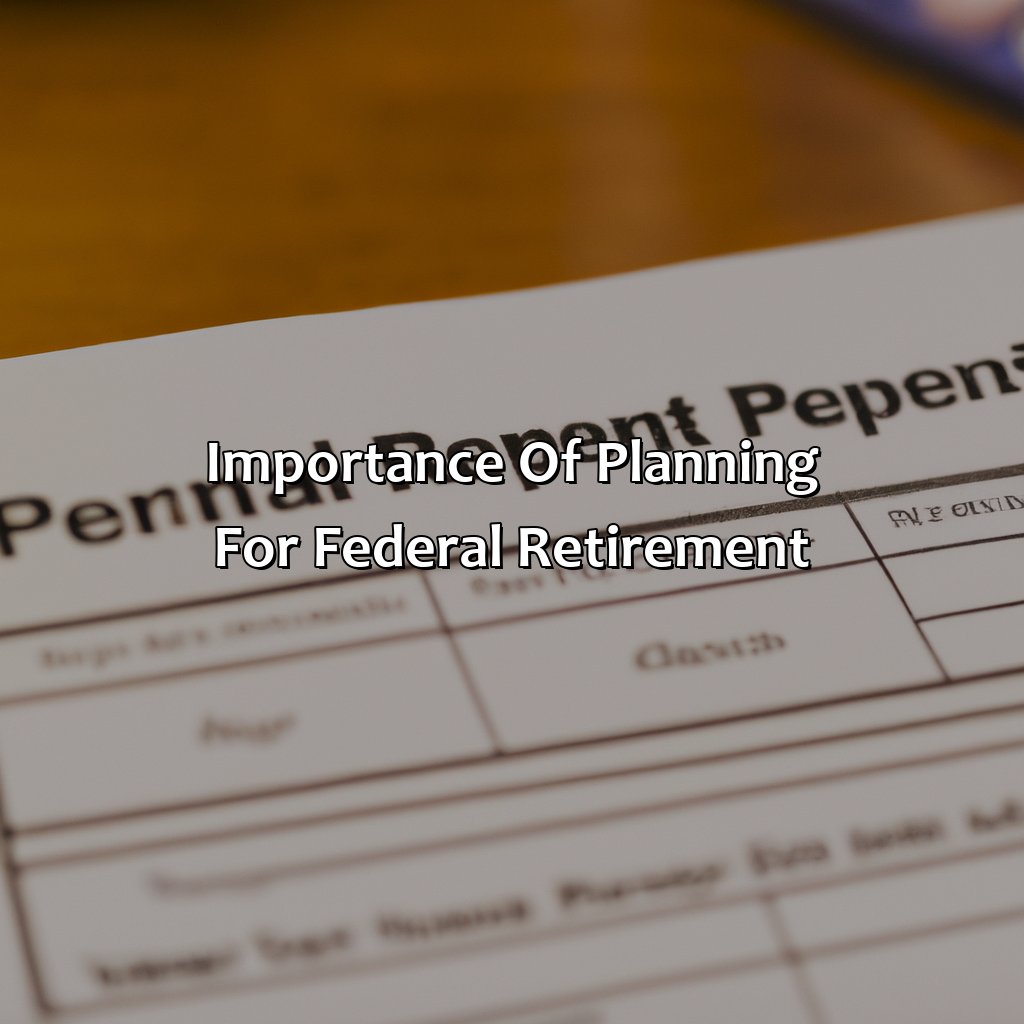
Image credits: retiregenz.com by Yuval Duncun
Retirement Readiness Checklist
When preparing for retirement as a federal employee, having a checklist to measure your readiness can be beneficial. This tool will enable you to determine the crucial steps to take and map out strategies towards a smooth transition from work life to retirement.
- Review Social Security Statements and Pension Estimates
- Evaluate Retirement Income Sources
- Assess Monthly Expenses and Project Future Spending Needs
Some of the unique details that could help increase readiness include consulting with an expert in the field, tracking your spending habits, creating an emergency fund, among others.
Pro Tip: Keeping track of your finances throughout your working life is key to being ready for retirement.
Retirement Planning Resources
Planning for your federal retirement is crucial – discover various resources to help you. Follow the guidance of experts and invest time to research different types of investment plans that can generate sustainable income streams post-retirement.
Moreover, don’t forget to review your retirement plan annually after retirement! In doing so, you’ll be able to monitor any changes and update your plan accordingly.
Many online tools, books, and financial advisors can assist you along the way. Moreover, government agencies such as OPM provide a wealth of federal retirement planning resources that are accessible free-of-charge.
According to reports by Forbes Magazine, 61% of workers desire support from their employers when it comes to crafting out an intelligible retirement plan strategy.
Five Facts About Federal Retirement:
- ✅ Federal employees can retire with full benefits at age 62 with five years of service, or at any age with 20 years of service. (Source: OPM.gov)
- ✅ Federal employees can retire with reduced benefits at age 60 with 20 years of service, or at any age with five years of service. (Source: OPM.gov)
- ✅ Federal employees who retire under the Federal Employees Retirement System (FERS) typically receive a pension based on the average of their highest three years of salary. (Source: FedSmith)
- ✅ Federal employees can also enroll in the Thrift Savings Plan (TSP), a retirement savings plan similar to a 401(k), to supplement their pension benefits. (Source: TSP.gov)
- ✅ Federal employees can also choose to retire under the Civil Service Retirement System (CSRS), which has different eligibility requirements and benefit calculations than FERS. (Source: OPM.gov)
FAQs about How Many Years For Federal Retirement?
What is the minimum number of years for federal retirement?
The minimum number of years for federal retirement varies depending on the retirement system and age of the employee. For those under the Federal Employees Retirement System (FERS), the minimum retirement age is 56 for those born before 1970, with at least 30 years of service. For those born in 1970 or later, the minimum retirement age is 57, with at least 30 years of service. For those under the Civil Service Retirement System (CSRS), the minimum retirement age is 55 with at least 30 years of service.
What is the maximum number of years for federal retirement?
There is no maximum number of years for federal retirement. As long as a federal employee meets the retirement eligibility requirements, they can continue working and accruing benefits until they decide to retire.
Is there a penalty for retiring early?
Yes, employees who retire before reaching the minimum retirement age may face a penalty. FERS employees will have their pension reduced by 5% for every year they retire before reaching their minimum retirement age, while CSRS employees will have their pension reduced by 2% for every year they retire early.
What benefits do federal retirees receive?
Federal retirees receive a number of benefits, including a monthly pension, health insurance coverage, life insurance, and access to the Thrift Savings Plan. The amount of the pension and other benefits will depend on the individual’s retirement system and years of service.
When do federal retirees start receiving their pension?
Federal retirees typically start receiving their pension payments the month after they retire. However, there may be some delay based on how quickly the employee’s retirement application is processed.
Can federal employees retire early?
Yes, federal employees can retire early if they meet the eligibility requirements. However, as mentioned earlier, they may face a penalty for retiring before reaching the minimum retirement age. Additionally, retiring early may impact the employee’s pension and other retirement benefits.
